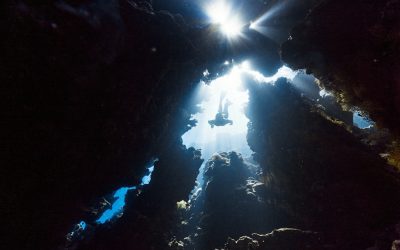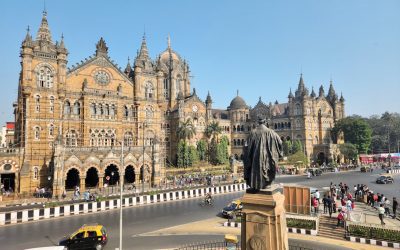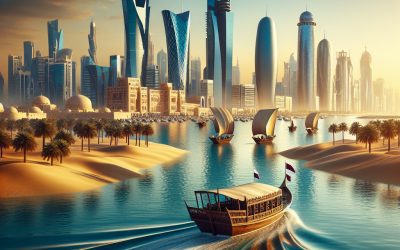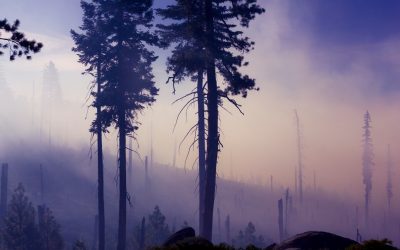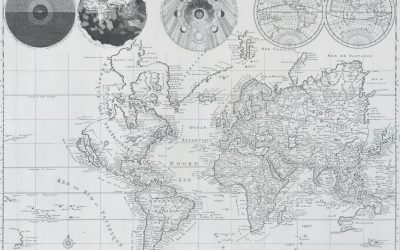Explore the World Through Geography, Natural Resources & Daily History
Clear, reliable and engaging guides that help you understand our planet — from UK geography education to global natural resources and On This Day history events.
Explore, discover, and learn about the wonders of our world! At Earth Site, we’re passionate about bringing geography, history, and science to life for curious minds of all ages. Whether you’re delving into historical events, uncovering the mysteries of the natural world, or seeking interactive resources, you’re in the right place.
Here, you can uncover the stories behind historical events, explore the natural wonders of our planet, and gain valuable insights into how the Earth’s systems shape our daily lives. From the towering peaks of mountain ranges to the far-reaching impacts of human innovation, we aim to make every topic both engaging and informative.
Start your journey of discovery with us today, and let’s make learning an adventure!
What We Cover
Earth Site brings together engaging and accessible educational content designed to help you understand the world, its history, and its natural systems.
🌍 Geography Education (UK & Worldwide)
We publish clear, easy-to-understand geography resources for students, teachers and curious learners. Our guides support geography education in the UK and cover physical geography, climate, ecosystems, population, and global development.
⛏️ Natural Resources & Environmental Geography
Explore detailed country profiles covering natural resources, mining, energy, geology and global environmental challenges. We show how nations manage minerals, water, land and ecosystems, and why these resources matter.
📅 On This Day in History
Every day has a story. Our On This Day history series features major events, anniversaries, traditions, and cultural milestones from around the world — with timelines, context, and fun facts.
TIMELINE
History of Qatar
Qatar boasts a rich and diverse history dating back to antiquity. The earliest known inhabitants of the region were Bedouin tribes who led a nomadic lifestyle, herding camels and engaging in trade across the Arabian Peninsula. The area now known as Qatar was also part of the ancient civilisations of Mesopotamia and the Indus Valley, serving as an important trading hub for the ancient Sumerians, Babylonians, and Assyrians. In the 7th century, Qatar came under the influence of Islam and became part of the Islamic Caliphate. The region was subsequently ruled by various Islamic dynasties, including the Umayyads, Abbasids, and Ottomans. Qatar’s strategic location along the Arabian Gulf rendered it an important trading post, renowned for its pearl diving and fishing industries. The Al Thani family, who continue to rule Qatar to this day, emerged as a prominent political force in the 18th century, eventually establishing Qatar as a unified and independent state. Summary Qatar’s early history dates back to the 4th century, with evidence of human habitation and trade activities. Ottoman and British influence in Qatar led to the signing of several treaties, ultimately resulting in Qatar becoming a British protectorate in the early 20th century. The discovery of oil in the 1940s transformed Qatar’s economy and paved the way for its independence from British rule in 1971. Modernization and development efforts have propelled Qatar into a global player, with significant investments in infrastructure, education, and healthcare. Qatar plays a key role in the Gulf Cooperation Council, working with neighbouring countries on issues such as security, trade, and economic cooperation. Ottoman and British Influence The Discovery of Oil...
Cultural or Historical Sites of Qatar: Important Cultural Landmarks or Historical Sites In Qatar
The Pearl-Qatar is an artificial island situated in Doha, Qatar‘s capital city. It stands as a representation of Qatar’s rich history and culture, having been constructed on the site of a former pearl diving and trading centre. The island serves as a testament to Qatar’s profound connection to the sea and its historical dependence on pearl diving as a significant source of income. The Pearl-Qatar is a modern architectural achievement that pays tribute to the country’s past, featuring opulent residential and commercial developments, along with impressive marinas and promenades. The island’s architecture and design draw inspiration from traditional Qatari and Arabian influences, seamlessly blending historical elements with contemporary aesthetics to create a distinctive and lively community. The Pearl-Qatar not only symbolises Qatar’s rich history and culture but also demonstrates the country’s vision for the future. It exemplifies Qatar’s dedication to sustainable development and urban planning, with its emphasis on establishing a vibrant and inclusive community that honours the country’s heritage whilst embracing modernity. The island is home to a diverse population, with residents from various parts of the world coming together to form a dynamic and cosmopolitan society. The Pearl-Qatar embodies Qatar’s past, present, and future, standing as a prime example of the country’s ability to preserve its heritage whilst embracing progress and innovation. Summary The Pearl-Qatar is a symbol of Qatar’s rich history and culture, showcasing the country’s modern development while preserving its heritage. Al Zubarah Fort plays a crucial role in preserving Qatar’s heritage and history, offering visitors a glimpse into the country’s past. The Museum of Islamic Art is a testament to Qatar’s artistic and cultural...
Qatar
Qatar (Dawlat Qaṭar (State of Qatar)) Capital: Doha Population (Estimated July 2012): 1,951,591 Area: 11,571km2 or 4,468mi2 Currency: Qatari Riyal (QR) Official Language: Arabic Political Information: Constitutional Emirate Official Religion: Islam(approximately 77.5% of the population are Muslim, 8.5% are Christian and 14% have other religious beliefs) Highest Point: Qurayn Abu al Bawl (Tuwayyir Al Hamir) at 103m or 338ft GDP Official Exchange Rate (OER is more precise at gauging a country’s economic power) (Estimated 2011): $173.2 billion (US$) or (GBP) GDP (OER) Per Capita (per member of the population estimated 2011): (US$) or (GBP) GDP Purchasing Power Parity (PPP is good for gauging living conditions and the use of resources but is not as accurate as OER. This data has been calculated based on the sum value of all goods and services produced in the country valued at prices prevailing in the United States) (Estimated 2011): $181.7 billion (US$) or (GBP) GDP (PPP) Per Capita (per member of the population estimated 2011): $102,700 (US$) or (GBP) Time Zone (GMT/UTC): +3:00 Wildlife: Counties/Provinces/States: 7 municipalities (Baladiyat, singular – baladiyah); Ad Dawhah, Al Khawr wa adh Dhakhirah, Al Wakrah, Ar Rayyan, Ash Shamal, Az Za’ayin, Umm Salal Leaders: Emir Sheikh Hamad ibn Khalifah Al Thani assisted by Prime Minister Sheikh Hamad ibn Jasim ibn Jabr Al Thani. Additional: Gained independence from the U.K. on the 3rd of September 1971. Sources: CIA World Fact Book, Encyclopaedia Britannica. Qatar Qatar, officially known as the State of Qatar, is a sovereign country situated in Western Asia. It is located on the north-eastern coast of the Arabian Peninsula and shares its sole land border with Saudi Arabia to the south....
Fire management and prevention
Fire management and prevention are crucial aspects of environmental conservation and public safety. Wildfires can cause extensive damage to natural habitats, wildlife and human settlements. They can also result in the loss of lives and livelihoods. Therefore, it is essential to have effective fire management and prevention strategies in place to mitigate the impact of wildfires. By actively managing and preventing fires, we can protect our ecosystems, preserve biodiversity and safeguard human communities. Furthermore, fire management and prevention are essential for maintaining the ecological balance in natural habitats. Many plant species have evolved to be fire-adapted, meaning that they rely on periodic fires to regenerate and thrive. However, uncontrolled wildfires can disrupt this natural cycle and lead to the loss of important plant species. By implementing effective fire management strategies, we can ensure that wildfires occur in a controlled manner, allowing ecosystems to benefit from the regenerative effects of fire without causing widespread destruction. Summary Proper fire management and prevention are crucial in protecting lives, property, and the environment. Human activities, such as campfires, discarded cigarettes, and arson, are common causes of wildfires. Strategies for fire prevention include creating defensible spaces around homes, implementing fire-resistant landscaping, and adhering to fire restrictions. Controlled burns play a vital role in reducing fuel loads and minimising the risk of catastrophic wildfires. Public awareness and education are essential in promoting responsible fire behaviour and fostering a fire-safe community. Understanding the Causes of Wildfires Wildfires can be caused by a variety of factors, both natural and human-induced. Natural causes of wildfires include lightning strikes, volcanic eruptions, and spontaneous combustion. However, the majority of wildfires...
Fun and Unique Geography Topics
The Earth harbours numerous extraordinary and captivating landforms that have been sculpted by natural forces over millions of years. One of the most remarkable is the Salar de Uyuni in Bolivia, the world’s largest salt flat. This otherworldly landscape spans over 10,000 square kilometres and comprises a thick salt crust covering a pool of brine. During the rainy season, the flat transforms into an enormous mirror, reflecting the sky and producing a striking visual effect. Another peculiar landform is the Giant’s Causeway in Northern Ireland, consisting of thousands of interlocking basalt columns formed by volcanic activity more than 50 million years ago. The columns are predominantly hexagonal in shape and create a surreal and unearthly landscape that has enthralled visitors for centuries. The Wave in Arizona is yet another extraordinary landform, featuring undulating, swirling rock formations that appear alien in nature. This sandstone rock formation has been eroded by wind and water over millions of years, resulting in a unique and mesmerising landscape. Summary The World’s Strangest Landforms: Landforms such as the Giant’s Causeway and the Salar de Uyuni showcase the incredible diversity of the Earth’s natural formations. Unusual Geographic Phenomena: From the mysterious moving rocks of Death Valley to the stunning light pillars in cold climates, the world is full of fascinating and unusual geographic phenomena. Quirky Geographic Facts: Did you know that the world’s largest desert is actually Antarctica? Or that the Great Blue Hole in Belize is a giant underwater sinkhole? Weird and Wonderful Natural Wonders: The unique landscapes of places like the Chocolate Hills in the Philippines and the Stone Forest in China are truly...
Environmental Geography
Environmental geography is a branch of geography that examines the interaction between humans and the environment. It investigates the impact of human activities on the natural world and seeks to comprehend the intricate relationships between physical and human systems. Environmental geography also analyses the spatial patterns of environmental phenomena and how they are influenced by factors such as climate, topography, and land use. This field of study is vital for understanding the challenges facing our planet and for developing sustainable solutions to environmental issues. Environmental geography encompasses a wide range of topics, including climate change, natural resource management, conservation, and environmental policy. It draws upon principles from physical geography, ecology, and social science to provide a comprehensive understanding of the Earth’s systems and the ways in which they are affected by human activities. By studying environmental geography, researchers and policy-makers can gain valuable insights into the complex dynamics of the natural world and work towards creating a more sustainable future for all. Summary Environmental geography is the study of the relationship between humans and the environment, focusing on the impact of human activities on the natural world. Understanding environmental geography is crucial for addressing environmental issues such as climate change, deforestation, and pollution. Key concepts in environmental geography include ecosystems, biodiversity, natural resources, and environmental sustainability. Case studies in environmental geography provide real-world examples of how human activities have affected the environment, such as the impact of urbanization on local ecosystems. Human impact on the environment includes factors such as population growth, industrialization, and consumption patterns, all of which contribute to environmental degradation. The Importance of Environmental Geography Understanding...
Ethnic Geography: How Ethnic Groups Are Distributed Globally
Ethnic geography is the study of the spatial distribution of ethnic groups and the factors influencing their distribution. It examines how different ethnic groups are distributed across the world and within specific regions, as well as the impact of this distribution on cultural landscapes, political boundaries and social dynamics. Ethnic geography also explores the relationships between ethnic groups and their environments, including how they interact with natural resources and how their cultural practices shape the physical landscape. This field of study is important for understanding the complexities of human diversity and the ways in which it shapes our world. Ethnic geography is a multidisciplinary field that draws on concepts and methods from geography, anthropology, sociology and political science. It seeks to understand the spatial patterns of ethnic diversity and the processes that drive these patterns, such as migration, colonialism and globalisation. By examining the distribution of ethnic groups, ethnic geography can provide insights into the social, economic and political dynamics of different regions, as well as the ways in which ethnic diversity contributes to cultural richness and social cohesion. Overall, ethnic geography is a crucial area of study for understanding the complexities of human societies and the ways in which they are shaped by their cultural diversity. Summary Ethnic geography is the study of the spatial distribution of ethnic groups and their interactions with the environment. Factors such as migration, historical events, and government policies influence the distribution of ethnic groups within a region. Major ethnic groups are distributed unevenly across the globe, with some regions being more ethnically diverse than others. Political boundaries often reflect and influence the...
World Religions: How Geography Influences Belief Systems
Religion has been a fundamental aspect of human society for thousands of years, shaping cultures, influencing politics and guiding individual beliefs and practices. The world is home to a diverse array of religious traditions, each with its own unique set of beliefs, rituals and values. From the ancient polytheistic traditions of the Greeks and Romans to the monotheistic faiths of Christianity, Islam and Judaism, to the Eastern philosophies of Hinduism and Buddhism, the world’s religions offer a rich tapestry of spiritual expression. Each religion provides a framework for understanding the nature of existence, the purpose of life and the relationship between humanity and the divine. As such, religion has played a central role in shaping human history and continues to be a powerful force in the modern world. Religious beliefs and practices are deeply ingrained in the fabric of human society, influencing everything from art and architecture to social customs and moral codes. The study of world religions offers valuable insights into the diversity of human experience and the ways in which different cultures have sought to make sense of the world around them. By examining the beliefs, rituals and ethical teachings of various religious traditions, we can gain a deeper understanding of the human experience and the complex interplay between faith, culture and society. In an increasingly globalised world, where different religious traditions come into contact with one another more frequently than ever before, it is essential to have a nuanced understanding of the world’s religions in order to foster mutual respect and understanding among diverse communities. Summary World religions encompass a wide range of belief systems and...
Indigenous Peoples and Their Connection to Geography
Indigenous peoples possess a profound and historical connection to their land, spanning numerous generations. For these communities, the land is not merely a physical space but is intricately linked to their cultural, spiritual and economic well-being. Many indigenous groups regard the land as sacred, viewing it as a source of life and sustenance. This relationship is often reflected in traditional narratives, ceremonies and practices, which are transmitted orally from one generation to the next. Moreover, the land plays a crucial role in shaping the identity and social structure of indigenous peoples. Many indigenous communities have specific territories they have inhabited for centuries, which are central to their sense of belonging and cultural heritage. The land also provides the foundation for indigenous economies, as numerous communities rely on traditional practices such as hunting, fishing and agriculture for their livelihoods. In essence, the land is not simply a physical space for indigenous peoples but a fundamental aspect of their cultural, social and economic existence. Furthermore, the land holds significant spiritual and religious importance for many indigenous groups. It is often perceived as a living entity to be respected and cared for, rather than exploited for material gain. This spiritual connection to the land is reflected in the traditional knowledge and practices of indigenous communities, which often centre around sustainable and harmonious interactions with the natural environment. Overall, the historical relationship between indigenous peoples and their land is deeply rooted in cultural, spiritual and economic significance. Summary Indigenous peoples have a deep historical relationship with their land, often viewing it as sacred and essential to their cultural identity. Traditional indigenous knowledge of...
Mangrove restoration
Mangroves are crucial ecosystems that offer a broad range of advantages to both the environment and local communities. These distinctive coastal forests play a vital role in safeguarding shorelines from erosion and storm surges, whilst also providing habitats for a diverse array of marine and terrestrial species. Moreover, mangroves function as carbon sinks, aiding in the mitigation of climate change effects by sequestering substantial amounts of carbon dioxide from the atmosphere. Despite their significance, mangrove ecosystems face threats from various factors, including deforestation, pollution and climate change. Consequently, there has been an increasing recognition of the necessity to restore and conserve these valuable ecosystems. The restoration of mangrove ecosystems is essential for maintaining the health and resilience of coastal areas. By replanting mangroves in regions where they have been lost or degraded, we can help protect shorelines from erosion, reduce the impacts of storm surges and provide crucial habitats for a wide range of species. Furthermore, restoring mangroves can assist in mitigating the effects of climate change by sequestering carbon dioxide from the atmosphere. This not only helps reduce greenhouse gas emissions but also provides a valuable tool for climate change adaptation. In addition to their environmental benefits, mangroves also offer important economic and social advantages to local communities, including supporting fisheries, providing timber and non-timber forest products and offering opportunities for ecotourism. Therefore, the restoration of mangrove ecosystems is crucial for ensuring the long-term sustainability of coastal areas and the well-being of local communities. Summary Mangrove restoration is crucial for protecting coastal areas from erosion and providing habitat for diverse marine life. Threats to mangrove ecosystems include deforestation,...
The Role of Geography in Sustainable Tourism
Sustainable tourism is a concept that aims to minimise the negative impact of tourism on the environment whilst also benefiting local communities and economies. It involves responsible travel to natural areas that conserves the environment, sustains the well-being of the local people, and incorporates interpretation and education. Geography plays a crucial role in sustainable tourism, as it encompasses the physical and human aspects of the Earth’s surface. The geographical features of a destination, such as its climate, topography and natural resources, can significantly influence the type of tourism activities that can be developed in the area. Furthermore, the cultural and historical aspects of a place, which are also part of its geography, can shape the way tourism is managed and experienced. Geography also influences the accessibility and infrastructure of a destination, which in turn affects the level of tourism development and its impact on the environment. Sustainable tourism seeks to strike a balance between promoting economic growth through tourism and preserving the natural and cultural heritage of a place. This requires an understanding of the geographical context in which tourism takes place, as well as the implementation of strategies that take into account the unique characteristics of each destination. In this article, we will explore the impact of geography on tourism, the challenges and opportunities for sustainable tourism in different geographical contexts, and successful sustainable tourism practices in various geographical locations. Summary Sustainable tourism aims to minimise the negative impact on the environment and local cultures, while promoting economic benefits and community involvement. Geography plays a crucial role in shaping tourism, influencing factors such as climate, landscape, and accessibility....
Borders and Boundaries: How Countries Are Divided
Borders and boundaries have played a significant role in shaping the world as we know it today. They are the lines that separate one country from another, defining the territorial limits of a nation. Borders can be physical, such as rivers, mountains, or man-made structures, or they can be imaginary lines agreed upon by neighbouring countries. Boundaries, on the other hand, refer to the legal and political aspects of border demarcation. They determine the rights and responsibilities of each country in relation to their shared border. The concept of borders and boundaries has been a fundamental aspect of human civilisation, dating back to ancient times. They have been used to establish sovereignty, regulate trade and migration, and maintain security. The establishment of borders and boundaries has been a complex and often contentious process throughout history. It has involved wars, treaties, and diplomatic negotiations. The impact of borders on culture, society, and politics cannot be overstated. In this article, we will explore the historical origins of country divisions, the modern methods of border establishment, border disputes and resolutions, the impact of borders on culture and society, as well as the economic and political implications of borders. We will also discuss future trends in border management and security, as the world continues to grapple with issues of migration, security, and globalisation. Summary Borders and boundaries have been used throughout history to define and separate territories, often leading to conflicts and disputes. The historical origins of country divisions can be traced back to ancient empires and colonial powers, shaping the modern map of the world. Modern methods of border establishment include treaties,...
